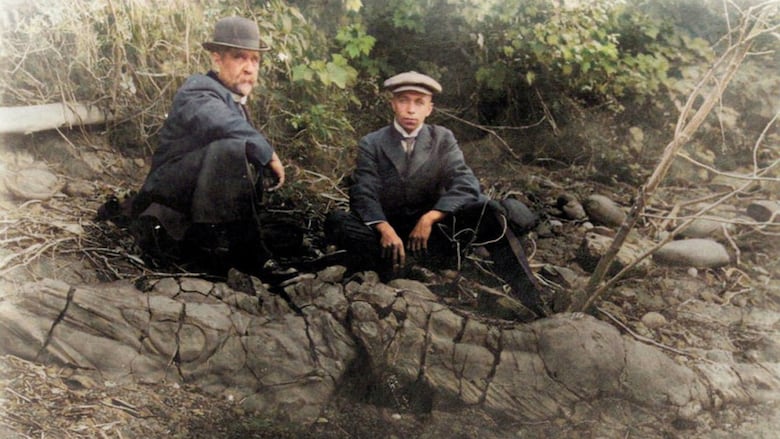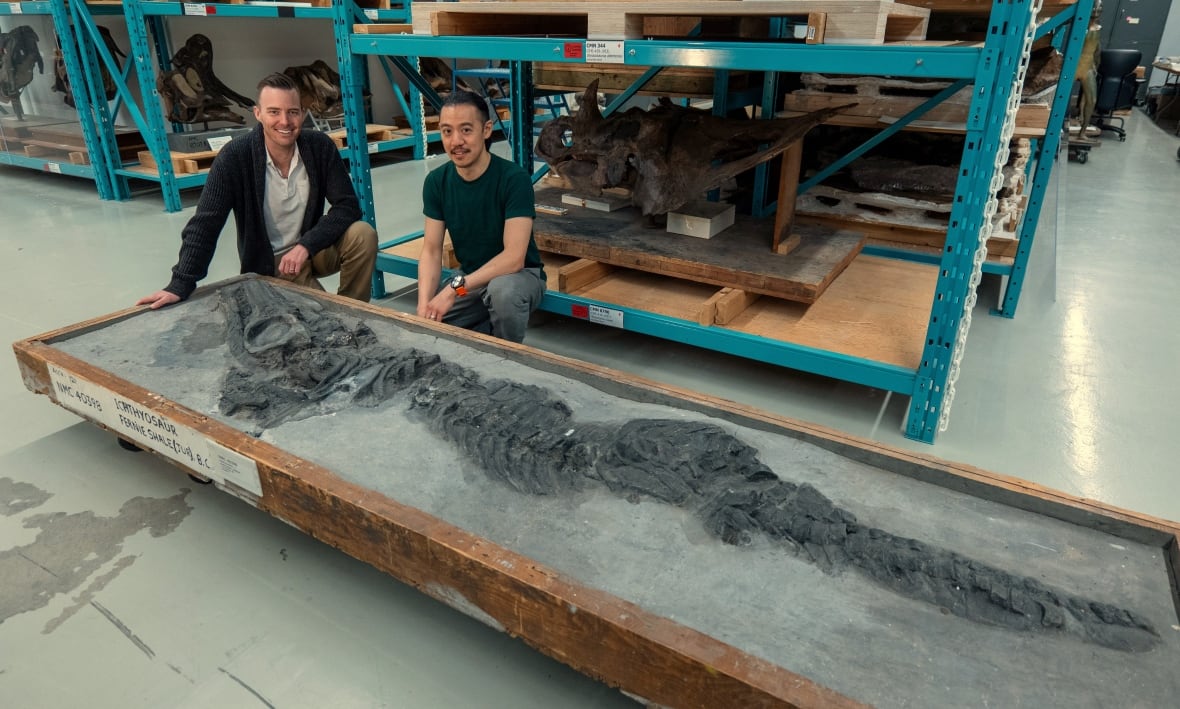Fossil discovered over 100 years ago in Fernie, B.C., identified as new species
The Fernatator prenticei, a marine reptile, dates back about 190M years

An ichthyosaur fossil discovered near Fernie, B.C., which has been sitting in an Ottawa museum for more than a century, was recently identified as a new species by a team of scientists.
The Fernatator prenticei is a marine predator that looked similar to a dolphin, existed about 250 million years ago, and went extinct before the dinosaurs did 66 million years ago.
The fossil was originally discovered by Tom Prentice in 1916 when he was fishing in the Elk River, around 12 kilometres south of Fernie, which is about 940 kilometres east of Vancouver.

"He alerted the coal company about this find because he figured they'd have the means to extract it, which is what they did," paleontologist Jordan Mallon told CBC's Daybreak South.
The coal company donated the fossil to the Geological Survey of Canada, which eventually became the Canadian Museum of Nature, where Mallon works and helped identify the fossil.
Mallon studies dinosaurs and said when he started working at the museum in Ottawa more than a decade ago, he noticed the fossil sitting on the shelves and it sparked his curiosity.

He showed Judy Massare, an ichthyosaur researcher and professor emeritus at the State University of New York Brockport, a photo of the fossil and asked her what her thoughts were about it. After that, the duo began working together to try and identify the fossil.
Fernatator prenticei
Mallon said it wasn't obvious at first that the fossil was a new species. The scientists initially thought the fossil was an ichthyosaurus, a well-known species from Europe.
"The closer we looked at it, the more we realized there was a lot of discrepancies," he said.
The body size of the ichthyosaur fossil is larger, and some of the "nitty-gritty features of the skull" were why scientists published the finding as a new species, named Fernatator prenticei.

Fernatator means "Fernie swimmer," named after the town of Fernie and the rock formation the fossil comes from, called the fernie formation.
Prenticei is the species name, chosen to honour the man who found the fossil.
'Most complete ichthyosaur skeleton in North America'
Mallon said the animal found dates from 190 million years ago, and is the most complete ichthyosaur that's been discovered in North America.
In the field of paleontology, finding a complete skeleton of any animal is rare.
"We've known about these animals from B.C. before, but it's only ever based on a piece of a front flipper here, or on a vertebrae there," he said.
"It's important because it tells us that these things are out there, if only we keep our eyes peeled we're likely to find more."